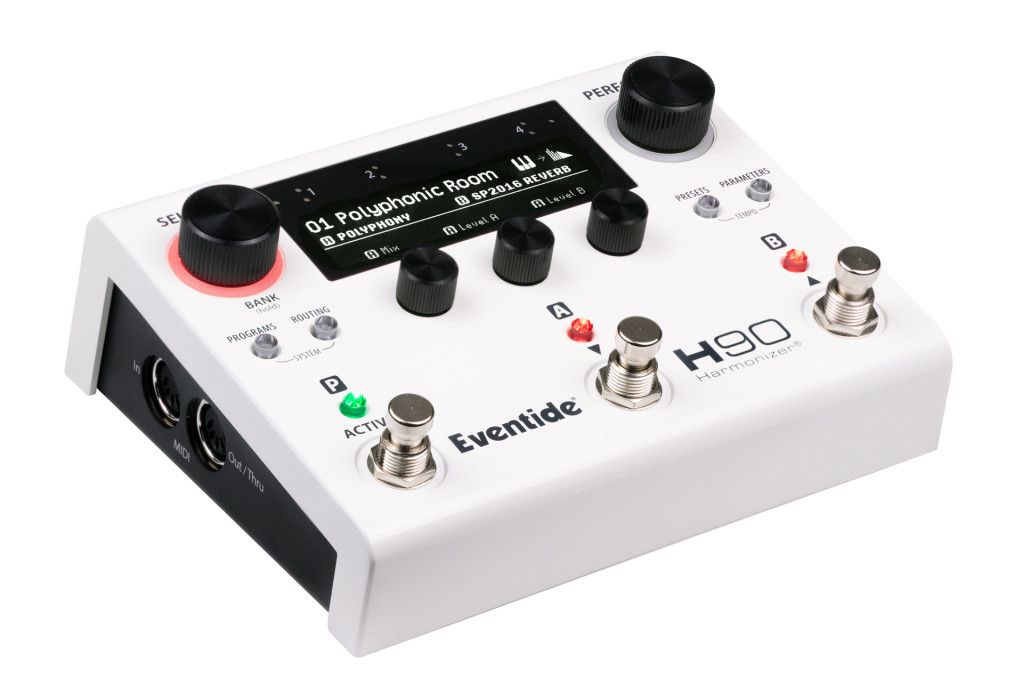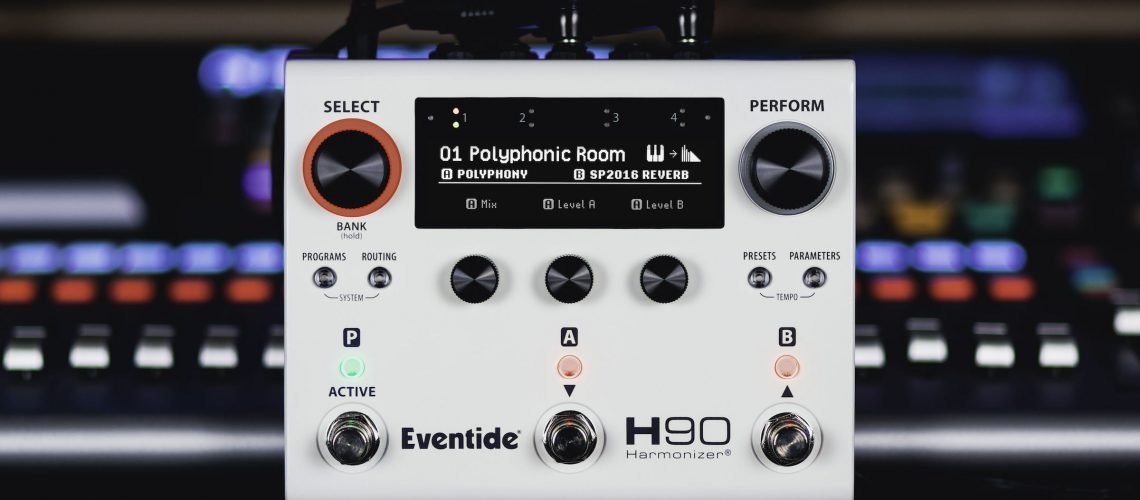It’s more than a dual-algorithm successor to the H9. Think of the new H90 as a baby H9000 – all the latest Eventide digital processing powers in a compact size. At US$899 with this many tools inside, it even rivals plug-in suites for value.
And when I say this is a pint-sized H9000, I mean that literally. The H90 is the first to inherit the ARM-based architecture of Eventide’s flagship DSP box. It does all of this right out of the box – with a slightly larger size also accommodating more hands-on control, which was always my gripe about the H9.
To be fair, the H9 is no slouch – and might be about to become a smart bargain buy on the used market, especially, since it still has 52 effects algorithms and MIDI DIN/USB. The H9 MAX made that a pretty strong value, especially when Eventide did away with the store model and just crammed everything in the hardware. That platform, though, hit the parts shortage and a changing customer model. Recap from 2021:
(That also covers upgrade and support paths if you do have one of the H9 family.)
The H90 offers some good reasons to upgrade and, despite the higher price, might well have enough added functionality to tempt people to the platform for the first time, too.
New in this version:

- 10 new effect algorithms: Polyphony, Prism Shift, Bouquet Delay, Head Space, Weedwacker, Even-vibe, Wormhole, Instant Flanger, Instant Phaser, and SP2016 Reverb
- New low-latency polyphonic pitch shift. So this is what they call SIFT (Spectral Instantaneous Frequency Tracking) – and it gives you new, responsive, polyphonic pitch shifting.
- Two algorithms per program.
- Use it as either two separate mono inserts or one stereo insert
- True spillover between Programs, series and parallel effect routing
- Dual-mode processes two independent stereo signals at once (that’s the one that gets me – this is more than just a single stereo processor)

I was excited by what Eventide was doing with ARM from the first time I saw the platform in beta development at a technical conference in Berlin. It’s part of an evolution of their work in DSP that stretches back now decades. And despite all the ways that DSP theoretically should be commoditized, this remains an arcane, wonderful craft, from how the algorithms are coded to how parameters and presets are voiced. (If it weren’t, I’d probably quit the sound thing and do something useful and lucrative with my life.)
The new algorithms are some of the most compelling from Eventide, too.
Prism Shift takes a single chord and transforms it into three voices that unfold across time and register. (It’s new, and yet very Eventide H-series.)
Even-Vibe emulates Uni-Vibe in stereo with envelope followers. Wormhole, you probably know. Head Space is a vintage four-head tape delay with some modern twists. Boutique Delay is a BBD with modulation, if you didn’t guess, but it’s specifically tuned here with both modern and vintage options and an eye to performance.
WeedWacker is a two-stage serial overdrive “reminiscent of a famous green pedal.” They can’t say Ibanez, but I can. (Going on a tangent, here’s a great read from a builder who got into their own hardware inspired by that design.)
But to that, you add Instant Phaser, Instant Flanger, and SP2016 vintage room/plate reverb with its… own epic history.
There are certainly cheaper takes on all these algorithms in both hardware and software. And before I’m too quick to say the hardware bests the software in value, once you do have plug-ins you can add a lot more than two algorithms at once – that much is clear. But this is looks to be a uniquely well-formed package.
Having more control is also a big deal, and overdue. You get give push knobs, seven LED buttons, hi-re OLED, and options for navigating presets or triggering performance options.
In PERFORM mode, you can tap tempo, tap in a freeze or pitch flex or delay repeat, and HotSwitch through presets. Then there’s still CV and MIDI control. So the H90 suits not only instruments, but digital rigs, synths, modular, whatever. There are more options in the software, too, though I’m encouraged to see more on-device editing because… yeah, at some point if you’re using the software too much, you start to think about just using plug-ins.
I’ll be curious to see this in action. I’m just a bit occupied with Eventide’s excellent Misha modular sequencer at the moment. Meanwhile, Eventide have a ton of videos tell the H90’s story.
https://www.eventideaudio.com/H90
And here are all your videos in one place.
Official vids:
There is competition in this category. Apart from devices like Rebel Technology’s OWL and other ARM-based gadgets that run your own code/patches, there’s the excellent MOD Audio Dwarf, which I’ve reviewed. In some ways, that feels like an open take on the H90 – there are even some similar patching and control options. The actual sonic character is totally different, though. The good news is, you still have a choice – MOD Audio was able to overcome financial and supply chain challenges with a crowdfunding campaign and the Dwarf lives on, which I’ll cover separately.
All in all, I’m glad to see this product category surviving these tough times for digital supply chains. It’s really a joy to work on this kind of hardware, especially for live performance – and that’s coming from a confessed plug-in lover.
Sticking with your H9? Interested in the H90? Want to hear about the sort of over-the-top H9000 capabilities? Other questions? Let us know!




